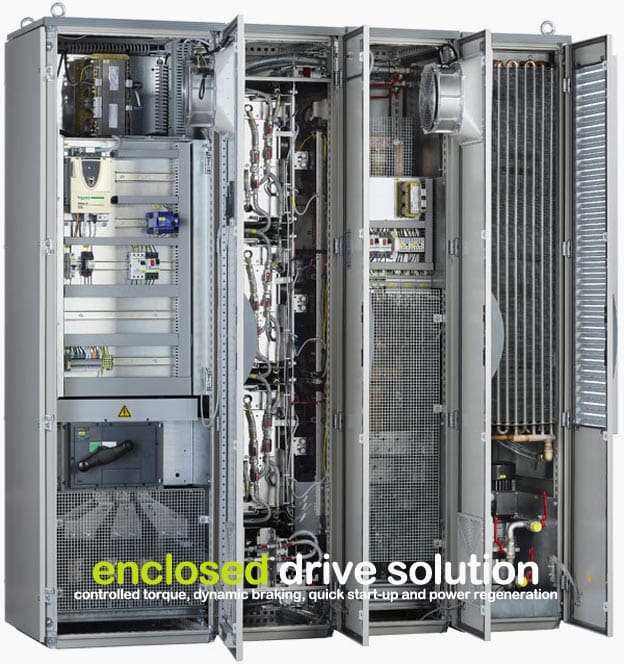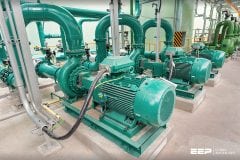Electric Motors
Electric motors impact almost every aspect of modern living. Refrigerators, vacuum cleaners, air conditioners, fans, computer hard drives, automatic car windows, and multitudes of other appliances and devices all use electric motors to convert electrical energy into useful mechanical energy.

In addition to running the common place appliances that we use every day, electric motors are also responsible for a very large portion of industrial processes.
Electric motors are used at some point in the manufacturing process of nearly every conceivable product that is produced in modern factories.
Because of the nearly unlimited number of applications for electric motors, it is not hard to imagine that there are over 700 million motors of various sizes in operation across the world. This enormous number of motors and motor drives has a significant impact on the world because of the amount of power they consume.
The systems that controlled electric motors in the past suffered from very poor performance and were very inefficient and expensive. In recent decades, the demand for greater performance and precision in electric motors, combined with the development of better solid-state electronics and cheap microprocessors has led to the creation of modern ASDs.
An ASD is a system that includes an electric motor as well as the system that drives and controls it.
controller, and the mechanical load.
The power supply is the source of electric energy for the system. The power supply can provide electric energy in the form of AC or DC at any voltage level. The power electronic converter provides the interface between the power supply and the motor. Because of this interface, nearly any type of power supply can be used with nearly any type of electric motor.
The controller is the circuit responsible for controlling the motor output. This is accomplished by manipulating the operation of the power electronic converter to adjust the frequency, voltage, or current sent to the motor. The controller can be relatively simple or as complex as a microprocessor.
Should you replace old motor drive?
The electric motor is usually, but not always, a DC motor or an AC induction motor. The mechanical load is the mechanical system that requires the energy from the motor drive. The mechanical load can be the blades of a fan, the compressor of an air conditioner, the rollers in a conveyor belt, or nearly anything that can be driven by the cyclical motion of a rotating shaft.
More advanced electric motor drives are now replacing older motor drives to gain better performance, efficiency, and precision. Advanced electric motor drives are capable of better precision because they use more sophisticated microprocessor or DSP controllers to monitor and regulate motor output. They also offer better efficiency by using more efficient converter topologies and more efficient electric motors.
The more advanced drives of today also offer a performance boost by utilizing superior switching schemes to provide more output power while using lighter motors and more compact electronics.
REFERENCE: Energy-Efficient Electric Motors – Ali Emadi











what about cell made on cibec effect and thompson effect?????????
\
i have gathered some information